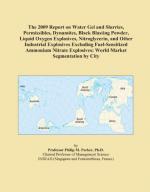|
This section contains 309 words (approx. 2 pages at 300 words per page) |
A highly volatile explosive, nitroglycerin was first produced by Italian chemist Ascanio Sobrero (1812-1888) in 1847. At about the same time German-Swiss professor Christian Schönbein discovered guncotton. Both inventions, given their high degree and speed of detonation, had the potential to immediately overthrow gunpowder as the chief military and commercial explosive. (Nitroglycerin's speed of explosion, for example, proved to be 25 times faster than that of gunpowder.)
Sobrero, guided by scientific curiosity rather than military interests, found that by combining a commonly used skin lotion glycerol with nitric acid and sulfuric acid, a colorless, oily liquid of enormous power resulted. However, the grim potential of his discovery so frightened him that he refused to publish his findings for nearly a year and then almost in secret. Consequently, nitroglycerin went largely unnoticed for many years, while the manufacture and use of guncotton, despite several notorious accidents, spread throughout Europe.
It was not until the mid-1860s, when Alfred Nobel made the important discoveries, successively, of the blasting cap and dynamite, that nitroglycerin became a widely used and respected explosive. Since that time--and even more so since Nobel's development of nitroglycerin-based blasting gelatin in 1875--its impact on the mining and construction industries has been profound. Previously, these industries were hampered by gunpowder's inability to obliterate large sections of rock. Nitroglycerin makes up about 75% of the materials used in the manufacture of dynamite.
Sobrero's substance also found use as a key ingredient in two smokeless powders, ballistite and cordite, from which all modern bullets derive their construction. Lastly, and perhaps most reassuring to the memory of both Sobrero and Nobel, nitroglycerin, in minute quantities, is regularly relied upon by doctors for the treatment of heart disease. Its properties of expansion have proven ideal for dilating coronary arteries in patients suffering from hypertension, cardiac pain, and the threat of heart attack.
|
This section contains 309 words (approx. 2 pages at 300 words per page) |


